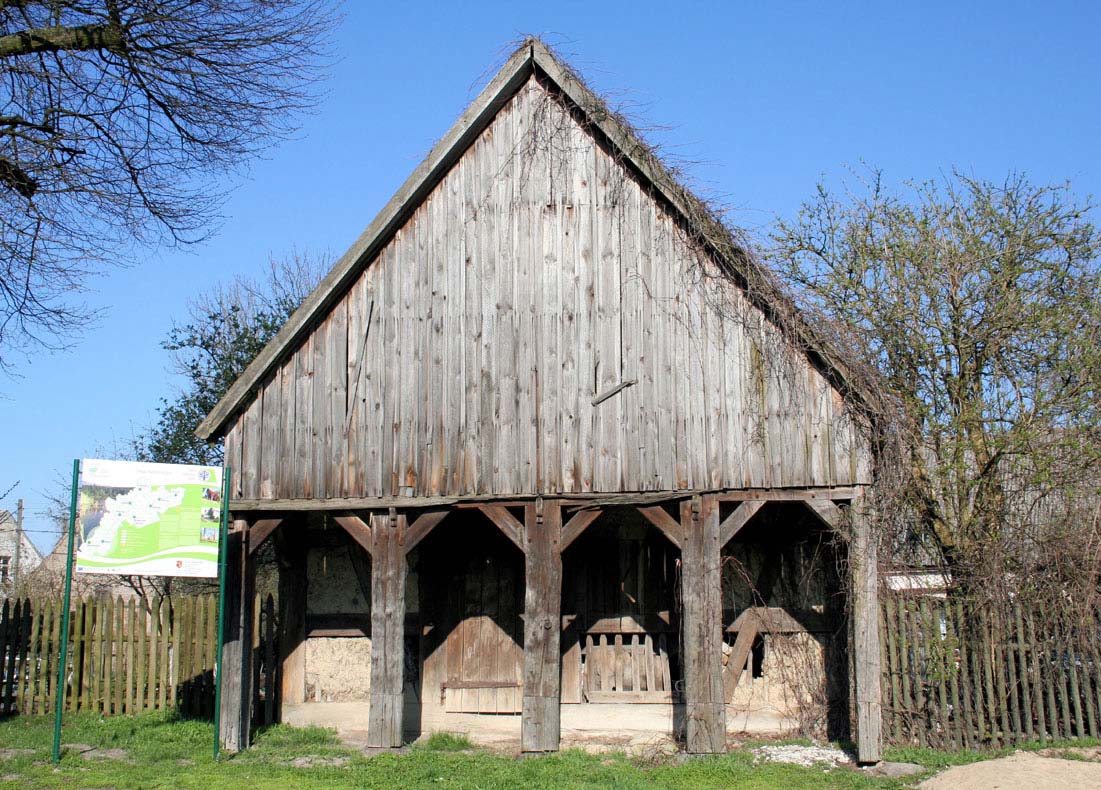History
The village of Dolsk (Dölzig) was first recorded in documents in 1337 under the name Toltzick. The arcaded forge in Dolsk was built in 1781, which was recorded by the date of construction placed on the lintel of the entrance. From 1792 it was owned by the von Tresckow family, then it became part of the village commune. At that time, the first owner was Schleuseners, then the Helterhoff family. From around 1920, the forge belonged to Georg Helterhoff, who ran a blacksmith and locksmith workshop. After World War II, the building was taken by the Dębno commune.
Architecture
The forge was erected on the southern outskirts of the village, on a rectangular plan with the longer sides on the east-west axis. It was built in a timber frame structure, in which the walls of the wooden frame were filled with clay mixed with sawdust or shavings. Only later, the northern and eastern walls were rebuilt with bricks and stones, probably to protect the building from the fire from the nearby hearth.
The forge was originally a single-space, one-story building, covered with a gable roof. The western façade, facing the main road running through the village, was formed by a triangular, wooden, boarded gable and an arcade based on five pillars, set on erratic stones and connected by a long cap beam supported by braces. The external facades of the building were made of a regular grid formed as a result of whitewashing the space between the beams, cut diagonally with beams only at the southern and western corners.
The only entrance to the interior of the forge was located in the west wall, not on the axis but closer to the northern part. The interior was illuminated by small, four-sided windows, created in the places between the beams. The interior of the forge was covered with a beam-clay ceiling, and the floor was made of stone pavement. In the middle of the forge there was an anvil, by the north wall there were a hearth with a hood and blacksmith equipment.
Current state
In 2009, a general renovation was carried out, or basically the reconstruction of the forge after its partial collapse. At the end of the work, an exhibition of reconstructed blacksmith tools was placed inside the monument. Despite the late date of construction, the forge has been included in this portal due to small transformations of the timber frame construction technique since the Middle Ages.
bibliography:
Riegel B., Die Schmiede in Dölzig, Die Wassermühle in Dölzig, „Heimat-kalender des Kreises Soldin”, Soldin 1928.
Webpage zabytek.pl, Kuźnia Dolsk.


